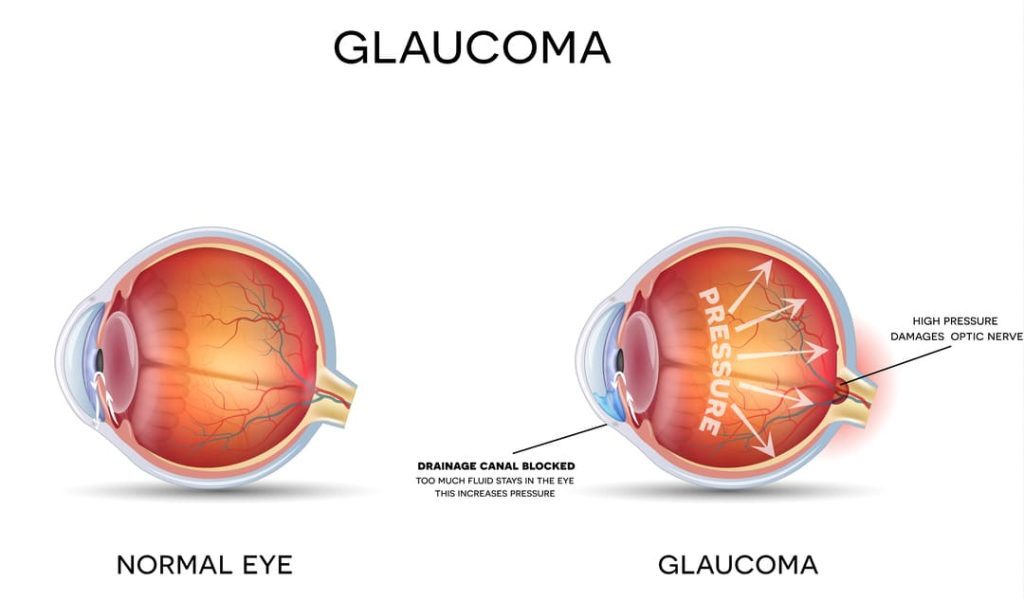Looking for Expert-Level VA Claim Answers?📱Call Us Now! 737-295-2226
Looking to get a VA rating for Glaucoma?
You’ve come to the right place.
While glaucoma is generally a genetic condition, it’s found in veterans with in-service injuries or exposure to specific irritants.
In this guide, we’ll break down how to qualify for a glaucoma VA rating, how the VA rates glaucoma, potential VA benefits and compensation, and what to do if your claim is denied.
Let’s get started.
Summary of Key Points
-
Glaucoma VA Rating Criteria: The severity of your glaucoma determines your VA rating, ranging from 10% to 60%, based on symptoms and treatment needs.
-
To receive glaucoma-related benefits, you must prove a service connection, including a current diagnosis, an in-service event, and a medical nexus linking the two.
-
Glaucoma can be linked to other service-connected conditions, such as diabetes or severe eye injury, to qualify for VA benefits.

VA Rating for Glaucoma
Glaucoma VA disability ratings can be 10%, 20%, 40%, or 60%. You can find the VA rating for glaucoma under CFR 38 Part 4 (4.79 Schedule of Ratings – eye).
More specifically:
- Diagnostic Code 6012: Angle-Closure Glaucoma
- Diagnostic Code 6013: Open-Angle Glaucoma
Angle-Closure Glaucoma
Also known as acute glaucoma or narrow-angle glaucoma, angle-closure glaucoma is a condition where the eye pressure generally rises very quickly.
Open-Angle Glaucoma
Open-angle glaucoma typically develops slowly and presents no symptoms in the early stages.
How the VA Rates Glaucoma
The VA rates glaucoma at 10%, 20%, 40%, and 60%, depending on the severity of your condition.
The VA rates glaucoma VA disability according to three criteria:
- Central Visual Acuity – better known as being near-sighted or far-sighted
- The Visual Field – considered your entire range of vision from central to peripheral on all sides, including up and down
- Muscle Function – refers to how well your eyes move
Glaucoma VA Rating Chart
| Severity of Symptoms | VA Rating for Glaucoma |
| With documented incapacitating episodes requiring 7 or more treatment visits for an eye condition during the past 12 months | 60% |
| With documented incapacitating episodes requiring at least 5 but less than 7 treatment visits for an eye condition during the past 12 months | 40% |
| With documented incapacitating episodes requiring at least 3 but less than 5 treatment visits for an eye condition during the past 12 months | 20% |
| With documented incapacitating episodes requiring at least 1 but less than 3 treatment visits for an eye condition during the past 12 months | 10% |
How to Get Service-Connected for Glaucoma

To receive glaucoma VA disability benefits, you must meet the following criteria:
- A current diagnosis
- An in-service event, injury, illness, or aggravation
- A medical nexus (i.e., link) between the current diagnosis and the in-service event, injury, illness, or aggravation
Important: Glaucoma is frequently viewed as hereditary, so when submitting your claim, ensure you provide sufficient medical evidence to prove your condition is service-connected.
Deserve a Higher VA Rating?
Book a no-obligation VA Claim Discovery Call with an experienced team member. We’ll review your situation, spot what the VA may have missed, and help you map out a strategy to unlock the VA disability rating and tax-free compensation you’ve earned for your service. Click the red button below to book your call.
Steps to Submit a Glaucoma VA Disability Claim
- Gather your evidence and supporting documents (i.e., VA medical records, hospital records, private medical records, hospital reports, and supporting statements)
- Submit your VA Form 21-526EZ claim online, in person at your local regional VA office, or by mail to:
Department of Veterans Affairs
Claims Intake Center
PO Box 4444
Janesville, WI 53547-4444
PRO TIP: When you plan to file a claim for VA disability for glaucoma, you should submit an intent to file form, which gives you time to gather the necessary evidence and documentation. This locks in your effective date—and could grant you additional back pay!
Glaucoma as a Secondary VA Disability
While proving your glaucoma is caused by another condition is difficult, it’s not impossible.
For example, diabetes can cause irregular blood vessels to grow in your retina, leading to blocked eye drainage and glaucoma.
Additional conditions that have been known to develop or worsen glaucoma include:
- Hypertension (High Blood Pressure)
- Severe eye injury or trauma
- Migraines
PRO TIP: Before you can receive glaucoma VA disability as a secondary condition, you must first prove an already service-connected condition caused it.

Causes of Glaucoma in Veterans (Including Burn Pits)
You served your country, but it’s not without downsides. Many veterans experience various health conditions due to their service that impact daily life.
You can link your glaucoma to your service for several reasons, including:
- An illness experienced while on active duty that began or worsened your vision loss
- A serious brain or eye injury while on active duty
- Exposure to environmental conditions during service that negatively affected your eyesight, including sandstorms or burn pits
Treatments
If you receive a glaucoma VA disability rating, there are several treatment options available, including:
- Eye drops
- Oral medication
- Surgery
- Laser treatment
Additional Support
If you receive glaucoma VA disability, you may be eligible for the following additional benefits:
- Special Monthly Compensation
- Home modifications for accessibility
- Mobility aids
- Service animals
- Individual Unemployability (IU) compensation
Options if your VA Claim for Glaucoma was Denied
You can file an appeal if your VA claim is denied and you feel you deserve a VA rating for glaucoma.
For VA decisions dated on or after February 19, 2019, you have three options to continue your case:
- File a Supplemental Claim
- Request a Higher-Level Review
- Appeal to the Board of Veterans’ Appeals
(FAQs) Frequently Asked Questions
What types of medical evidence should I submit with my glaucoma VA claim?
When submitting a claim to receive a glaucoma VA rating, it’s best to include the following medical evidence:
- Medical records and a current diagnosis
- Private medical statements (i.e., DBQ, Nexus Letter or Independent Medical Opinions)
- Buddy statements
Can I receive VA disability for glaucoma if I have a VA rating for another condition?
Yes, you can have a VA rating for multiple conditions, leading to a combined VA rating. However, no VA rating can exceed 100%.
Is there a VA rating for bilateral glaucoma?
The General Rating Formula for Diseases of the Eye does not have a rating for bilateral and unilateral.
How long is the claims process to get a glaucoma VA disability rating?
The claims process varies depending on several factors, including the complexity of your case and the volume of claims being processed by the VA. To help further along your claim, start the process immediately to avoid unnecessary delays.
NEED MORE ASSISTANCE?
Most veterans are underrated for their disabilities and, therefore, not getting their due compensation. At VA Claims Insider, we guide you and take control of the claims process so you may get the rating and compensation you’re owed by law.
If you’ve filed your VA disability claim and have been denied or have received a low rating—or you’re unsure how to get started—reach out to us! Our process takes the guesswork out of filing a VA disability claim and supports you in building a fully developed claim (FDC). Take advantage of a VA Claim Discovery Call. Learn what you’ve been missing—so you can FINALLY get the disability rating and compensation YOU DESERVE!
Author

Kelly Olone
Kelly Olone is a military spouse who earned her degree in Psychology from Florida International University. After working in the non-profit sector for several years, she turned to her passion for writing. She aims to contribute to a better understanding of the valuable benefits that veterans deserve. As a mom, Kelly navigates the delicate balance between deadlines and bedtime stories with finesse.


